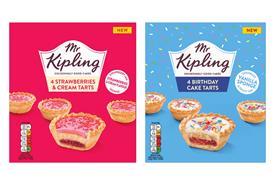The Food Standards Agency has welcomed new guidelines on the communication of information relating to sat fat consumption, easing fears that it might introduce scare tactic to warn off consumers.
The guidelines from IGD, developed with the industry, stressed the campaign should communicate to consumers the need to reduce sat fat intake without demonising products such as cheese and butter. The dairy industry had feared the FSA would choose to flag up the risks of sat fats by using the shock and awe tactics of government binge drinking and smoking campaigns.
“I don’t think a campaign that uses shock tactics is the right way to go,” said Rachel Hackett, nutrition manager at IGD and report author. “It should be about putting people in control of their diets and communicating a clear message on sat fats.”
The guidelines were welcomed by the dairy industry. “It is critical that people realise that foods containing saturated fat are not ‘bad’ for them, but rather these foods can play an important role in a healthy balanced diet when consumed in moderation,” said Dr Judith Bryans, director of the Dairy Council. “Foods containing sat fats do not need to be eliminated from diets,” she added.
Of 1,000 people interviewed by IGD, only 30% recognised that ‘saturated fat’ meant the same as ‘saturates” when presented with different terms. A further 30% did not know what the term meant, 15% thought it was the same as fat in general and 7% believed saturated fat was the same as ‘calories’.
The report recommends the use of credit card-sized information cards, fridge magnets and even family-oriented computer games to educate consumers on the need to consume sat fats in limited amounts. Industry members including Tesco, Unilever and the British Nutrition Foundation helped develop the guidelines with the IGD.
“This report will help inform the development of our forthcoming sat fat campaign in early 2009,” said Rosemary Hignett, head of nutrition division at the FSA.
The guidelines from IGD, developed with the industry, stressed the campaign should communicate to consumers the need to reduce sat fat intake without demonising products such as cheese and butter. The dairy industry had feared the FSA would choose to flag up the risks of sat fats by using the shock and awe tactics of government binge drinking and smoking campaigns.
“I don’t think a campaign that uses shock tactics is the right way to go,” said Rachel Hackett, nutrition manager at IGD and report author. “It should be about putting people in control of their diets and communicating a clear message on sat fats.”
The guidelines were welcomed by the dairy industry. “It is critical that people realise that foods containing saturated fat are not ‘bad’ for them, but rather these foods can play an important role in a healthy balanced diet when consumed in moderation,” said Dr Judith Bryans, director of the Dairy Council. “Foods containing sat fats do not need to be eliminated from diets,” she added.
Of 1,000 people interviewed by IGD, only 30% recognised that ‘saturated fat’ meant the same as ‘saturates” when presented with different terms. A further 30% did not know what the term meant, 15% thought it was the same as fat in general and 7% believed saturated fat was the same as ‘calories’.
The report recommends the use of credit card-sized information cards, fridge magnets and even family-oriented computer games to educate consumers on the need to consume sat fats in limited amounts. Industry members including Tesco, Unilever and the British Nutrition Foundation helped develop the guidelines with the IGD.
“This report will help inform the development of our forthcoming sat fat campaign in early 2009,” said Rosemary Hignett, head of nutrition division at the FSA.















No comments yet